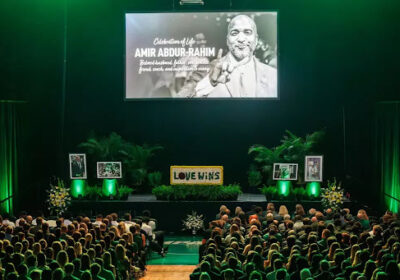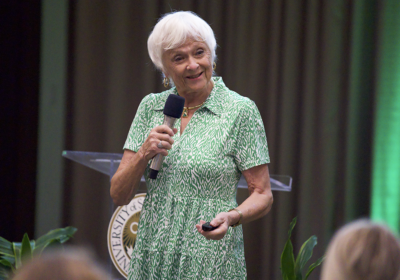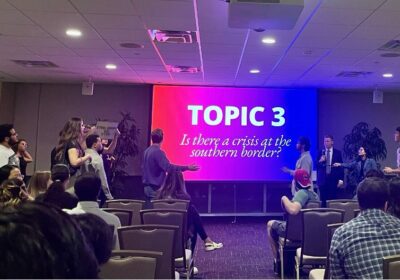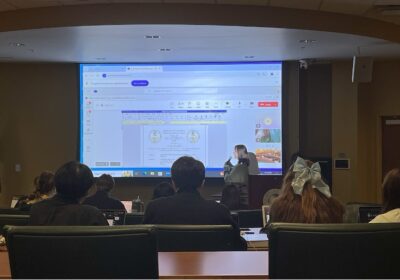Will USF’s on-campus stadium be more trouble than it’s worth? Faculty speak up
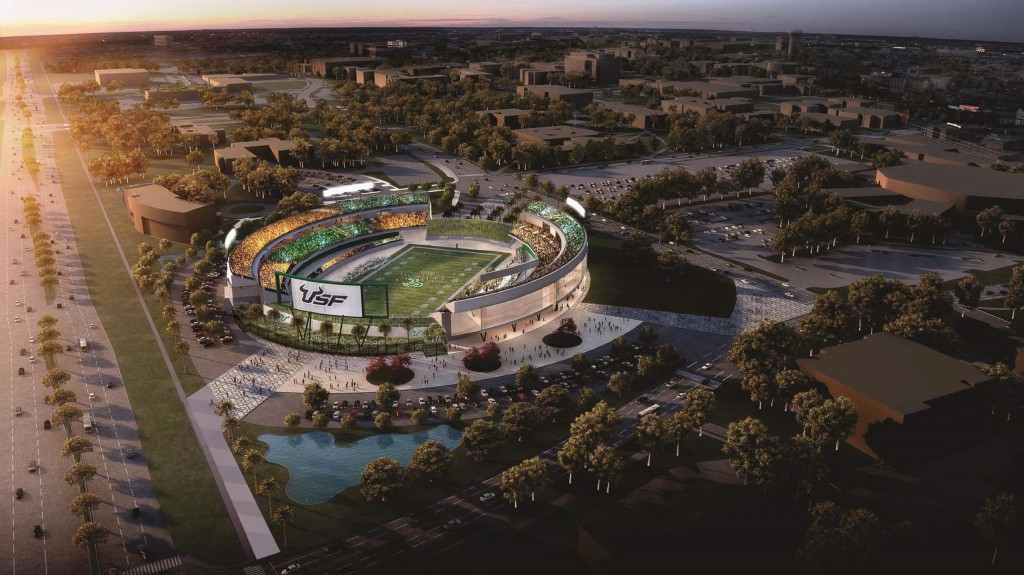
Faculty at USF wrestle with concerns regarding the new costs of the new $340 million on-campus stadium – and its possible impacts on academics.
The 35,000 seat facility, which is set to be opened in time for the fall 2026 football season, will be financed through a $200 million loan given to the university. Debt payments – which will be roughly $17.8 million annually – will covered by certain non-stadium and stadium operating revenues such as ticket sales, concessions, merchandise, parking and advertising revenues.
However, incurring a debt of $200 million is concerning for some faculty members.
Faculty Senate vice president and associate professor of history Brian Connolly said he is not sure if the evidence for the revenues they expect to make from the stadium are realistic.
“I’m sure the first year that this stadium opens, it will be packed and people will be excited. But if the teams don’t do as well as they hope, then will people still keep going?” he said. “And that raises concerns about the revenue that they would need to generate to pay off the debt.”
For its first year of operations, the new on-campus stadium is estimated to generate $20.5 million in revenue and see $5.3 million in expenses, leaving a net operating income of $15.2 million, according to a study done by CSL in 2017. After accounting for the $1.8 million in existing net income at Raymond James Stadium, around $13.4 million could be generated in the first year – though this will decrease to $4.7 million due to debt payments.
The expected net revenue after stadium debt increases for the subsequent years, according to the study, are:
- Year 2: $5.5 million
- Year 3: $5.96 million
- Year 4: $6.4 million
- Year 5: $6.8 million
- Year 10: $9.3 million
- Year 20: $15.6 million
- Year 30: $23.8 million
Though the university plans to also make revenues by having the new stadium serve as a concert venue, Connolly said he questions the optimism surrounding this plan given that there are other venues in Tampa that are more popular, such as Raymond James Stadium and Amelie Arena.
“They’ll have other events there and I’m sure they will plan to do that. But we’re not a college town in the middle of nowhere where there’s nowhere else. So there’s already the Yuengling Center and Raymond James and the Amphitheater and all these places, so it’s not like there aren’t places for music, concerts and things like that,” he said.
If the university cannot make the revenues to pay off the debt, Connolly said it would lead to another concern that the university’s credit rating will be threatened. In the long run, if this were to happen, it will make it harder for the university to borrow money for other things such as infrastructure, research and academics, Connolly said.
“I feel like we’re getting a very optimistic sense of it, and then in the long term it can have effects on the academic side of things for sure,” he said.
For others such as former faculty senate chair and associate professor Tim Boaz the wound is simply too fresh given the $36.7 million in budget cuts the university faced just three years ago. Boaz said the “recency of that memory” shows the university that they must be “careful” with how money is handled.
Boaz, like other faculty, wishes that the handling of the expenses of the stadium are kept separate from the money used for the university’s “main mission,” which is education and research.
The debt service which will be incurred to the university was approved at the last Board of Trustees (BOT) meeting on June 13, where only one board member – Faculty Senate president Jenifer Jasinski Schneider – voted against the action item.
Schneider’s vote was based on three main concerns held by faculty which included how the stadium will benefit the Tampa campus, how it will be financed and budgeted and the servicing of the $200 million debt.
“It’s a huge endeavor. We build buildings without something like this. And so the funds being diverted from other academic sources are very concerning to us,” Schneider said at the meeting.
The remaining costs of $140 million will be handled by the university directly through $50 million in donations from the USF Foundation, $34 million from auxiliary funds and proceeds from the 2017 FCC auction of TV broadband, $31 million from the capital improvement trust fund and $25 million in cash.
As a way to help appease faculty concerns, Schneider offered the possibility of a built-in firewall to separate the athletic debt and academics in the case that USF cannot make the revenue needed to meet annual payments.
Associate Professor of Philosophy and Faculty Senate Secretary Richard Manning said he is concerned that money is being spent on an athletic venture rather than for academic purposes, such as hiring new faculty and improving classrooms and infrastructure.
He said he doesn’t have much confidence that the costs will not negatively affect the academics in the long run, and says that it remains unclear what the factual basis is for the BOT’s confidence in the stadium project’s financial soundness.
“They’re gonna do this, whether it’s a good idea or not. It’s fun for them; It’s a big shiny object,” he said.
Manning also worries that there will be little to draw visitors to the new on-campus stadium as compared to Raymond James Stadium, which is situated in a “rich environment,” with attractive restaurants, hotels and other amenities sorely lacking near campus.
“A 1-10 football team is a 1-10 football team, whatever stadium they’re playing in, and they’re not going to get bumped into a more prestigious conference, etc, etc. until there’s actual athletic performance,” he said.
One of the ways the university has addressed these concerns is by creating a direct support organization (DSO) to handle the operation and arrangements of the stadium, Boaz said.
The DSO – named the USF Athletic Association (USFAA) – which was approved by the BOT on June 13 will help make the decisions and workings of the stadiums, such as transfers of money, more transparent to the community. Still, Boaz said he worries that the new USFAA will not be sufficient to handle faculty’s concerns.
Though the university administration continues to assure faculty that there will not be any impacts on academics, Boaz said he fears for the unknown.
“I think things can happen that we don’t foresee right now. So, I think faculty would be much more reassured by something that makes it such that [the separation] has to happen as opposed to just being told it will happen,” Boaz said.
“I think [the university] has the best of intentions. But things do happen. And we just think it’s very important for there to be something put in place that makes it so that this is the way it would have to go, that we would have to keep those two things separate.”


